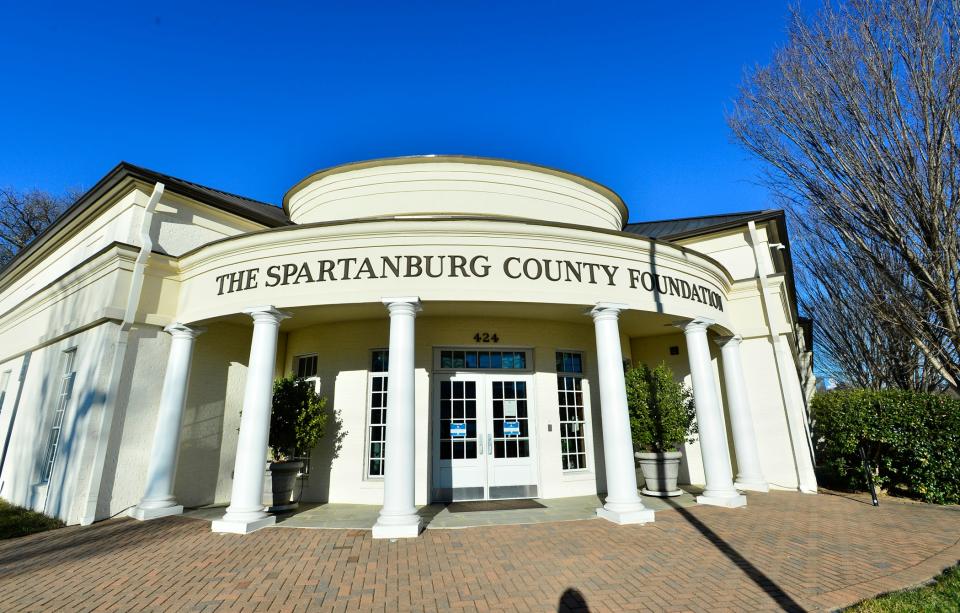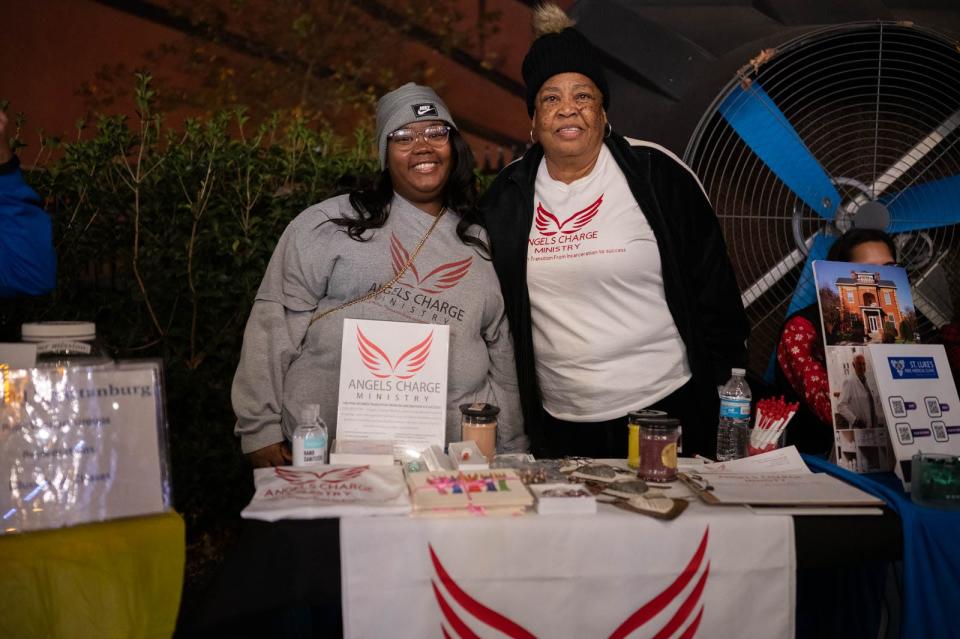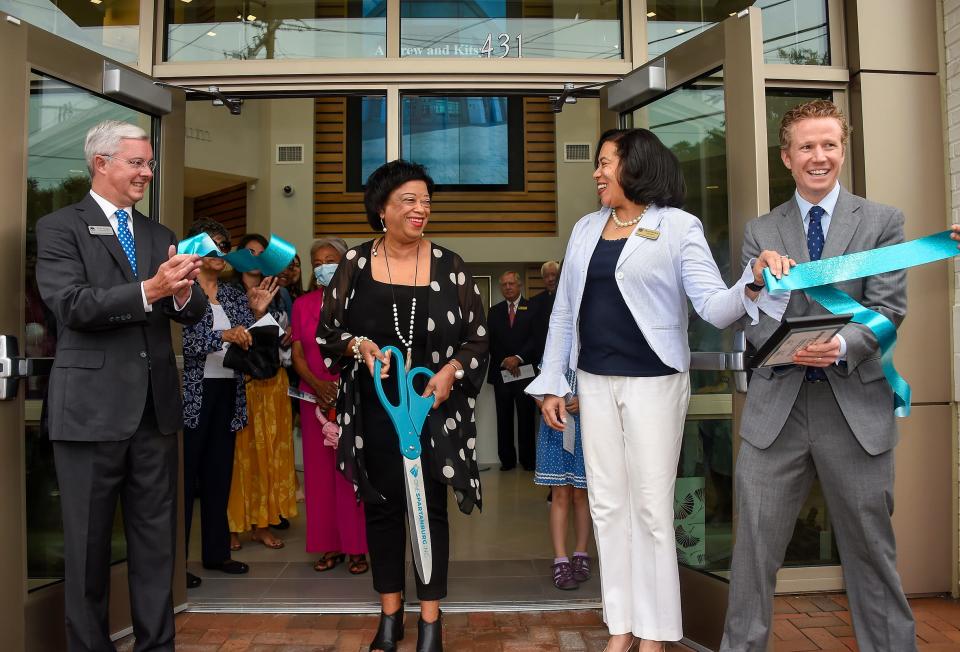Sharing our gifts: Tradition of philanthropy, giving at Spartanburg County's core
On a chilly Tuesday evening in late November last year, about 250 people, many with beer or cider in hand, socialized and circled the Fr8Yard in downtown Spartanburg. There was live music on stage.
At tables around the perimeter, about 30 nonprofit organizations raised their banners, offering literature, conversation and a chance to help.
Called “Brew Good,” the event is part of the annual Giving Tuesday effort by Spartanburg Gives, a collective of community organizations developed by communications and marketing entrepreneur and community activist Kathryn Harvey. This year’s event is Nov. 29 from 5:30 to 9 p.m. at Fr8yard.
Over on Kennedy Street, at the Spartanburg County Foundation, decisions take place about where millions of dollars entrusted by thousands of donors will be deployed for the benefit of the people of Spartanburg.

At the foundation’s Robert Hett Chapman III Center for Philanthropy across the street, meetings and training sessions take place in a facility specifically created for people to gather and discuss and work on community issues.
Not counting churches, Spartanburg has more than 300 nonprofit organizations, says Troy Hanna, the foundation’s President and CEO.
Their work is supported financially by individual contributors and by the county’s “joint funders,” the County Foundation, the Mary Black Foundation, the Spartanburg Regional Healthcare Foundation, Chapman Cultural Center and the United Way of the Piedmont.
Women Giving For SpartanburgCelebrating 15 years, looking ahead to future of philanthropy
The work is done by thousands of volunteers and staffers, each offering their time and talent to help make Spartanburg a better place to live.
Talk to people around Spartanburg and a common theme often comes up: The area’s spirit of generosity.
"There is a strong heritage here of giving, generosity, seeing needs and striving to meet them. That includes coming up with creative ways to approach meeting those needs," says Hanna.
Spartanburg County FoundationRuth Davis honored with Mary L. Thomas Award
One of those innovations is Spartanburg's community indicators program, begun in 1987, which quantifies the community’s well-being in multiple areas: Education, Economy, Social Environment, Natural Environment, Public Health, Civic Health and Cultural Vitality.
Spartanburg County foundation digs into the data
Hanna says using data allows for better, more equitable decisions, he says.
“It’s not a political position or opinions, it’s data and we’re following the data. It allows for funding to follow needs. If the data is not moving, then you can change to a different strategy.”
There was a disturbing data point in a 2008 economic development task force report: the number 19.2. That’s the percentage of Spartanburg residents 25 and older with a bachelor’s degree or higher.
The number was well below state and national levels and quantified something that had long been suspected. If Spartanburg hoped to have a dynamic, rising economy – the data showed there was work to be done.
The task force recommended the 40/30 Challenge – double the number of Spartanburg adults with bachelor’s degrees to 40% by 2030. To attack the goal, the Spartanburg County Foundation established and funded College Hub, a nonprofit organization focused on getting more students and adults to attend and graduate college.
But underneath the specific benchmark, the true challenge was increasing the economic mobility that almost always accompanies increased educational achievement. Moving toward that objective would require a comprehensive approach to education at all levels.
By 2013, College Hub had merged with several other related efforts and evolved into Spartanburg Academic Movement. SAM brings together education, business, government, community and faith leaders to work together in pursuit of increasing academic success for all the county’s children.
“One of our core values at SAM is equity and we drive equity by pointing to what the data reveals,” said Dr. Russell Booker, SAM Executive Director and the recently retired Superintendent of Spartanburg School District 7.
The data points to disparities. “There is no mistaking that our African American, Hispanic and poor students are impacted the most,” Booker said. “Our community is coming together to address these disparities.”
BRUH spotlights importance of mentoring
In 2005, Victor Durrah Jr. was a student at USC Upstate, learning about the management of nonprofit organizations.
He recalled his youth in Cowpens and the mentors who had helped him stay on a path that led him to college, when some of his peers had taken different more dangerous, destructive routes.
Recognizing the need, he founded Brothers Restoring Urban Hope (BRUH), an organization dedicated to connecting young people like himself with mentors and offering them a path of hope for the future. He graduated from USC Upstate in 2008 and has continued building BRUH ever since.
OpinionIn Spartanburg, mentoring is an investment that pays community dividends
The group has connected about 30,000 Spartanburg area youth, primarily young men, 17 to 25 years old, with group mentorship, leadership training and spiritual guidance. Durrah’s group has mobilized more than 3,000 volunteers to work with BRUH and other area organizations on a variety of events and programs.
Spartanburg arts community gives back
There’s a funny thing about giving to support the arts in Spartanburg – they give right back.
“There is a tremendous sense of giving in this community and supporting the arts in particular,” says Courtney Oliver, Marketing and Special Events Manager for the Spartanburg Philharmonic. “There’s a desire to engage with all these organizations and support them.”
That support keep the music playing for more than 40 performances each year in five different concert series presented by the Philharmonic.
Less than half the cost of staging a performance is covered by ticket sales, even with a sold-out crowd, Oliver says. The rest comes from donors and grants.
Yet, even as the organization receives, it gives - practicing philanthropy of its own.
The Philharmonic organizes and presents the Music Sandwiched In series at the downtown Library, free lunchtime performances that showcase Philharmonic members as well as other local artists.
Board member and education chair Helen Tipton puts her commitment into action, Oliver says. A music teacher in Spartanburg District 7, Tipton was instrumental in the creation of the Philharmonic’s Youth Orchestra, which held its first performance in 2019. She dedicates her time each Sunday during the season to be a co-manager for rehearsals and performances. She’s just one example of the Philharmonic’s active, engaged board, Oliver says.
Gifts of Support
At the most difficult moments in a person’s life, there is nothing more valuable than someone offering a hand to hold or a shoulder to lean on. Gifts of time, talent and treasure make it possible for these organizations to be there with support and encouragement.
Angels Charge Ministry is one such support system. The organization is dedicated to offering support to women who are working to make the transition from incarceration to a safe, productive life on the outside.

Pastor Nannie Jefferies established Angels Charge Ministry in 2014 after witnessing first-hand the challenges facing incarcerated women. She would visit jailed members of her own church and others to encourage and pray for the women and their children.
Jefferies and her team focus on providing what former prisoners need to get back into the mainstream of life, including mental health services, help with addiction, educational opportunity, housing, employment and transportation.
Resources to support for the group’s transitional housing program, case management and advocacy come from grants and donations.
Training and Collaborating
Most nonprofits get their start from a deep desire to help make things better – acting from the heart.
Often, the key to making those groups successful is also learning how to act with the head, says Mary Thomas, the COO of the Spartanburg County Foundation and the Executive Director of the Center for Philanthropy.

“This center was built for incubating ideas, programs, looking at some of the pressing issues in Spartanburg and asking: ‘What can we do to solve some of these issues?,” Thomas says.
The high-tech, $6 million facility is also intended to be a community resource, a place where meetings are held and collaborators can gather -- a space for anyone who is working for the benefit of the community.
The foundation’s Grassroots Leadership Development Institute and other efforts are aimed at training the next waves of community leaders. It's a great investment, Hanna says.
“We often worry about return on investment for our financial capital, but when you’ve graduated over 400 nonprofit and grassroots leaders back into our community, how do you measure that social impact, that social capital?” Hanna says. “Those graduates are sitting on city council, on county council. One is the mayor. They’re leading nonprofits. It’s immeasurable.”
This story appears in the Winter 2022 issue of Spartanburg Magazine. Reach magazine editor Chuck Milteer at cmilteer@gannett.com
This article originally appeared on Herald-Journal: Spartanburg community has tradition of coming together to help others

